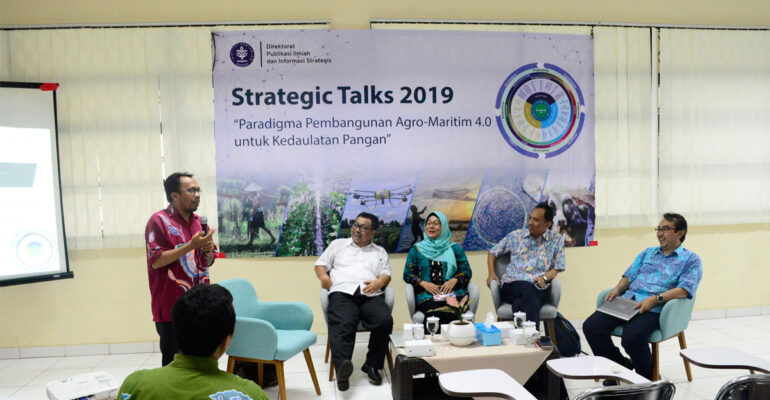Professor of IPB: Agrarian Policy for Food needs to be reviewed

At present the national food conditions are arguably not yet resilient and still need a lot of effort in maintaining national food security. Based on the results of the 2018 Global Food Security Index, Indonesia is ranked 65th with a score of 54.8. The rating is far below Malaysia which ranks 40th and Thailand ranks 54th. The ranking is based on affordability of food distribution, availability, quality and food security.
“Food becomes a strategic commodity for a nation and of course there is a social, cultural and life dimension closely related to food. So don’t be surprised if this food aspect causes a lot of turmoil,” said Prof. Dr. Ir. Budi Mulyanto, M.Sc in the 2nd Strategic Talk activity which took the theme “Agrarian Policy and Spatial Planning for Sustainable Food Production” on Tuesday (16/4), at the IPB Campus.
Food sovereignty or food security, he continued, must be related to aspects of agrarian resources and their management in the agrarian scope. These aspects of agrarian resources are considered important in relation to sustainable food supply.
Regarding agrarian resource management, Prof. Budi said it was very closely related to the current policy. With per capita land conditions of only 0.095 hectares and per capita rice fields of only 0.027 hectares, a policy is needed that can increase the land area.
“Indonesia’s land area per capita is still inferior to Thailand which has reached 0.230 hectares, while our paddy field area per capita is very far behind Vietnam, which has reached 0.850 hectares,” added Prof. Budi.
Therefore, he continued, there needs to be alternative policies that can support sustainable food production. The alternative policy is related to agrarian policy and national spatial planning. Some of the alternatives provided included inserting a map of Sustainable Food Farming (LP2B) into the Regional Spatial Plan map (RTRW), expanding agricultural food land including the possibility of establishing a National Food Strategic Area (KSNP), intensifying the implementation of agriculture, preventing land conversion food (especially rice fields) to other uses, diversification of food sources, and encourage the implementation of agrarian reform.
In particular, the development of KSNP in Indonesia can be developed in two ways, namely the development of existing locus of specific, premium and integrity food crop habitats and the development of new areas by considering the physical potential and local social and cultural conditions. (RYS)



